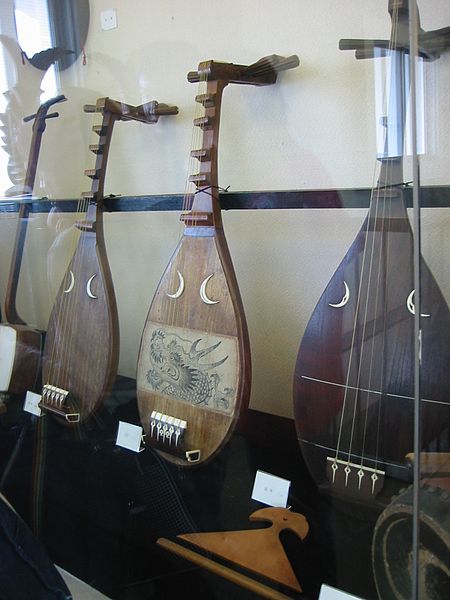The biwa is a Japanese short-necked wooden lute traditionally used in narrative storytelling. The biwa is a plucked string instrument that first gained popularity in China before spreading throughout East Asia, eventually reaching Japan sometime during the Nara period (710–794). Typically 60 centimetres (24 in) to 106 centimetres (42 in) in length, the instrument is constructed of a water drop-shaped body with a short neck, typically with four strings. In Japan, the biwa is generally played with a bachi instead of the fingers, and is often used to play gagaku. One of the biwa's most famous uses is for reciting The Tale of the Heike, a war chronicle from the Kamakura period (1185–1333). In previous centuries, the predominant biwa musicians would have been blind monks , who used the biwa as musical accompaniment when reading scriptural texts.
A selection of biwa in a Japanese museum
Benzaiten (Goddess of Music and Good Fortune) playing a biwa, 1832 woodblock print (surimono)
Gakubiwa
Plectra for the chikuzen-biwa (left) and satsuma-biwa
Gagaku is a type of Japanese classical music that was historically used for imperial court music and dances. Gagaku was developed as court music of the Kyoto Imperial Palace, and its near-current form was established in the Heian period (794–1185) around the 10th century. Today, it is performed by the Board of Ceremonies in the Tokyo Imperial Palace.
Jingu-Bugaku at Kotaijingu (Naiku), Ise city, Mie Prefecture





